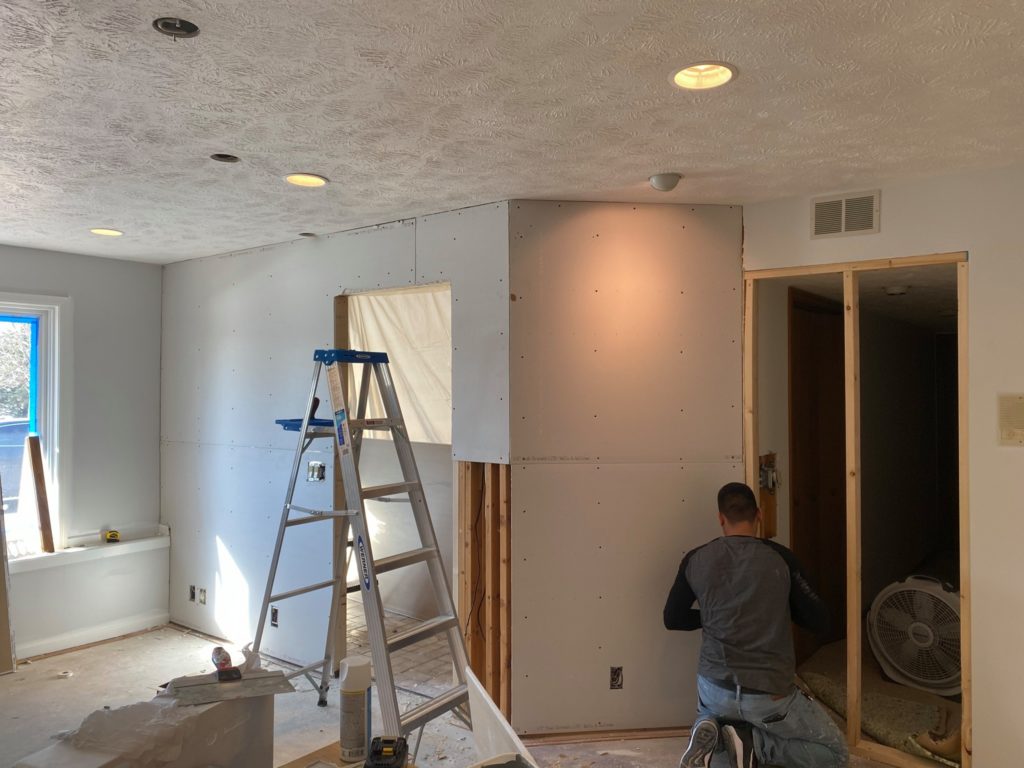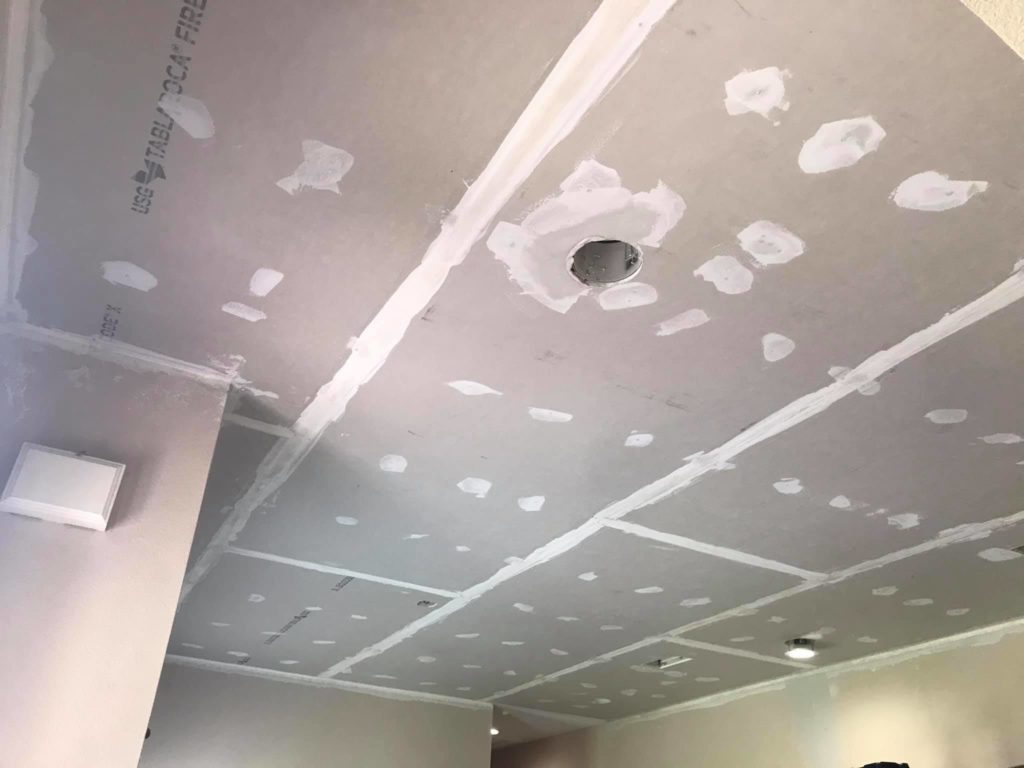Drywall Texture
More often than not, wall texture is applied out of necessity. If asked to choose, most homeowners would opt for a smooth and glass-like texture for their ceilings and walls. Apart from the fact that they are the most common modern style, smooth surfaces generally help wall color be more distinct. Since there are no bumps to form a shadow effect, its surface tends to look brighter.
However, wall texture actually has the added benefit of being a quick technique of finishing walls without the common endless cycles where you mud, cure, and sand drywall compound. Generally, wall texture may cover up any imperfect mudding or drywall work, and it also dries quickly enough such that you can start painting after a few hours.
The best part is that wall texturing – commonly referred to as wall stippling – may be done with a roller and using materials that are much affordable and easy to access.
Professional Kitchen Cabinet Painting
You might be tempted to save money, which is why you might want to paint your cabinets on your own. However, you probably won’t get good results if you don’t have the patience, time or the skills to take up the job. We work very hard to get each and every client the results they want.

How Wall Texture Works
In general, wall texture is a particular substance that’s thicker than paint yet thinner compared to straight drywall compounds. In most cases, the texture applied to ceilings and walls forms small shadows because of the bumps and depressions. And although these shadows often disappear when it comes to direct light, they tend to lengthen as your light source shifts at a sharper angle to that wall.
The darkening effect plays a vital role when it comes to hiding surface imperfections. In case your drywall has visible depressions, bulges, seams, or other imperfections, then wall texture can play an essential contributory role toward hiding them. More often than not, it is the main reason why ceilings are usually texturized. Since ceilings get the most light, it can be very challenging to hide their imperfections.
Spray Sand Ceiling Texture
You guessed it! This is exactly as it sounds! With spray sand ceiling texture, sand is usually combined with water, primer, or extremely thin mud, and finally sprayed onto the ceiling via a hopper gun. When done correctly, it leaves a textured surface that does not crack and separate such as an orange peel texture. Mostly used as a subtle accent, you will commonly find spray sand on ceilings, but you can also find it on walls.


Knockdown Drywall Texture
The term “Knockdown” is commonly used to refer to any texture that’s applied and then “knocked down” through dragging of a drywall knife above the surface, thus flattening its surface. That is the reason it is sometimes known as stomp knockdown or spray knockdown. And the only distinction is how the initial texture was applied; either by stomping, spray, or some other method. A knockdown texture develops a subtle effect, consisting of less shadowing on its textured surface. Even though the knockdown can actually be performed with any drywall knife, specialty knockdown tools are used to help get the correct angle.
When Should You CALL a Professional?
Are you looking to cover large regions with wall texture? It would be better to contract a decorator or painter to develop texture using an air-compressor texture sprayer. Splatter, orange peel, fog, and knock-down effects can all be achieved with texture sprayers. The application is fast, and it takes only several hours to dry.
Call us Now or Fill the Form for Free Estimate
